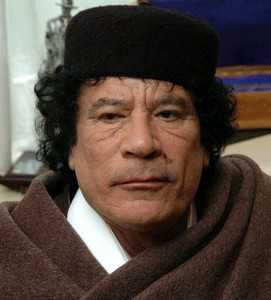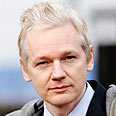By Greg Miller and Julie Tate
Behind a nondescript door at CIA headquarters, the agency has assembled a new counterterrorism unit whose job is to find al-Qaeda targets in Yemen. A corresponding commotion has been underway in the Arabian Peninsula, where construction workers have been laying out a secret new runway for CIA drones.
When the missiles start falling, it will mark another expansion of the paramilitary mission of the CIA.
In the decade since the Sept. 11, 2001, attacks, the agency has undergone a fundamental transformation. Although the CIA continues to gather intelligence and furnish analysis on a vast array of subjects, its focus and resources are increasingly centered on the cold counterterrorism objective of finding targets to capture or kill.
The shift has been gradual enough that its magnitude can be difficult to grasp. Drone strikes that once seemed impossibly futuristic are so routine that they rarely attract public attention unless a high-ranking al-Qaeda figure is killed.
But framed against the upcoming 10th anniversary of the 2001 attacks — as well as the arrival next week of retired Gen. David H. Petraeus as the CIA’s director — the extent of the agency’s reorientation comes into sharper view:
●The drone program has killed more than 2,000 militants and civilians since 2001, a staggering figure for an agency that has a long history of supporting proxy forces in bloody conflicts but rarely pulled the trigger on its own.
●The CIA’s Counterterrorism Center, which had 300 employees on the day of the attacks, now exceeds al-Qaeda’s core membership around the globe. With about 2,000 on its staff, the CTC accounts for 10 percent of the agency’s workforce, has designated officers in almost every significant overseas post and controls the CIA’s expanding fleet of drones.
●Even the agency’s analytic branch, which traditionally existed to provide insights to policymakers, has been enlisted in the hunt. About 20 percent of CIA analysts are now “targeters” scanning data for individuals to recruit, arrest or place in the crosshairs of a drone. The skill is in such demand that the CIA made targeting a designated career track five years ago, meaning analysts can collect raises and promotions without having to leave the targeting field.
Critics, including some in the U.S. intelligence community, contend that the CIA’s embrace of “kinetic” operations, as they are known, has diverted the agency from its traditional espionage mission and undermined its ability to make sense of global developments such as the Arab Spring.
Human rights groups go further, saying the CIA now functions as a military force beyond the accountability that the United States has historically demanded of its armed services. The CIA doesn’t officially acknowledge the drone program, let alone provide public explanation about who shoots and who dies, and by what rules.
“We’re seeing the CIA turn into more of a paramilitary organization without the oversight and accountability that we traditionally expect of the military,” said Hina Shamsi, the director of the National Security Project of the American Civil Liberties Union.
CIA officials defend all aspects of the agency’s counterterrorism efforts and argue that the agency’s attention to other subjects has not been diminished. Fran Moore, head of the CIA’s analytic branch, said intelligence work on a vast range of issues, including weapons proliferation and energy resources, has been expanded and improved.
“The vast majority of analysts would not identify themselves as supporting military objectives,” Moore said in an interview at CIA headquarters. Counterterrorism “is clearly a significant, growing and vibrant part of our mission. But it’s not the defining mission.”
 Agency within an agency
Agency within an agency
Nevertheless, those directly involved in building the agency’s lethal capacity say the changes to the CIA since Sept. 11 are so profound that they sometimes marvel at the result. One former senior U.S. intelligence official described the agency’s paramilitary transformation as “nothing short of a wonderment.”
“You’ve taken an agency that was chugging along and turned it into one hell of a killing machine,” said the former official, who, like many people interviewed for this story, spoke on the condition of anonymity to discuss sensitive intelligence matters. Blanching at his choice of words, he quickly offered a revision: “Instead, say ‘one hell of an operational tool.’ ”
The engine of that machine is the CTC, an entity that has accumulated influence, authority and resources to such a degree that it resembles an agency within an agency.
The center swelled to 1,200 employees in the immediate aftermath of the Sept. 11 attacks and nearly doubled in size since then.
The CTC occupies a sprawling footprint at the CIA campus in Langley, including the first floor of what is known as the “new headquarters” building. The chief of the center is an undercover officer known for his brusque manner, cigarette habit and tireless commitment to the job.
A CIA veteran said he asked the CTC chief about the pace of strikes against al-Qaeda last year and got a typically profane reply: “We are killing these sons of bitches faster than they can grow them now.”
The headquarters for that hunt is on a separate floor in a CTC unit known as the Pakistan-Afghanistan Department, referred to internally as PAD. Within the past year, the agency has created an equivalent department for Yemen and Somalia in the hope that it can replicate the impact of PAD.
Inside the PAD entrance is a photographic tribute to the seven CIA employees who were killed by a suicide bomber in December 2009 at a remote base in the Afghan city of Khost. Two were former targeters who had worked in the CTC.
Beyond that marker is a warren of cubicles and offices. On the walls are maps marked with the locations of CIA bases in Afghanistan and Pakistan, as well as whiteboards with lists of pending operations and code names of spies. Every paid informant is given a unique “crypt” that starts with a two-letter digraph designating spies who are paid sources of the CTC.
PAD serves as the anchor of an operational triangle that stretches from South Asia to the American Southwest. The CIA has about 30 Predator and Reaper drones, all flown by Air Force pilots from a U.S. military base in a state that The Post has agreed, at the request of agency officials, not to name. The intelligence that guides their “orbits” flows in from a constellation of CIA bases in Pakistan and Afghanistan.
More here >> www.washingtonpost.com, 2 September 2011





